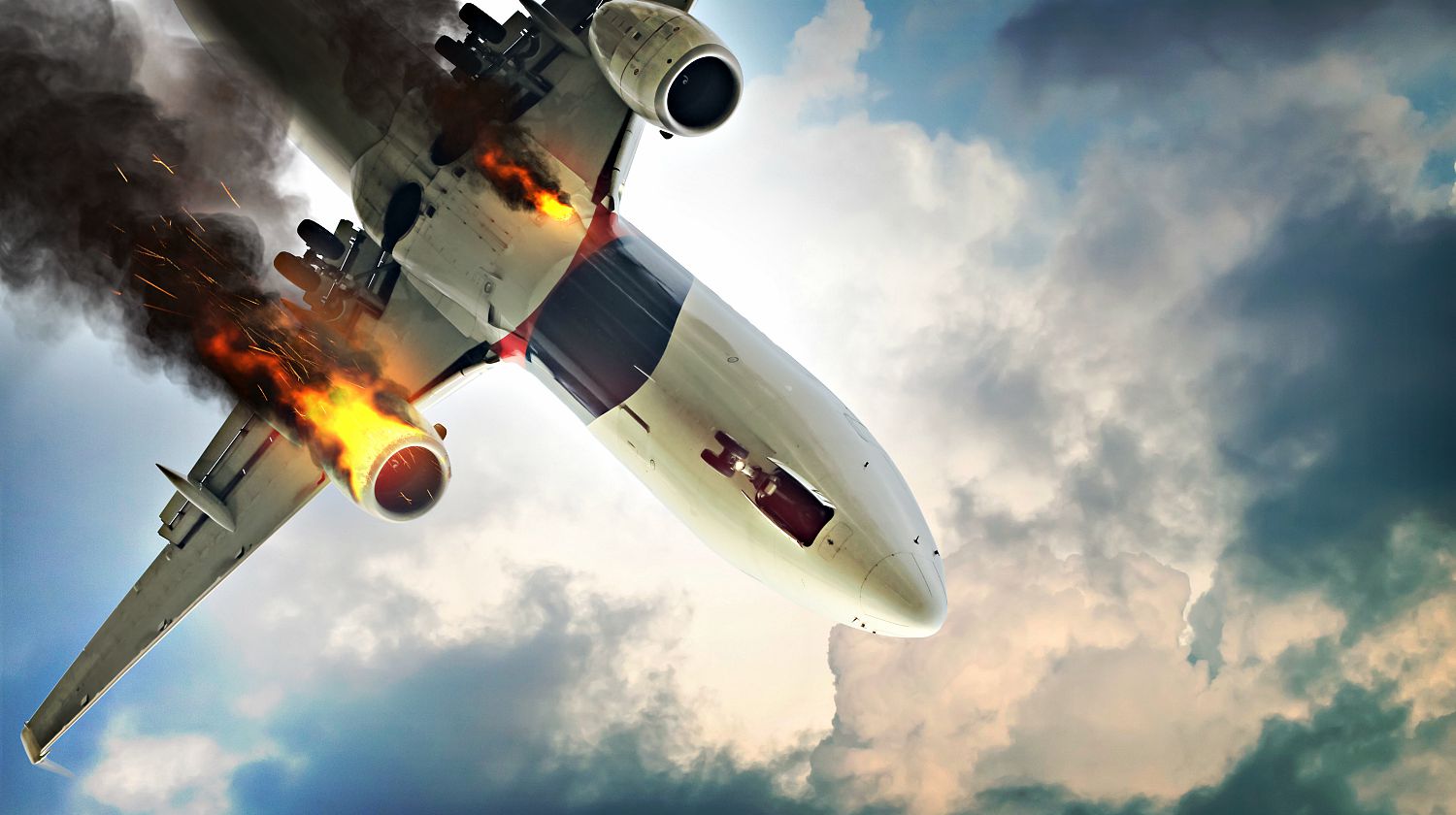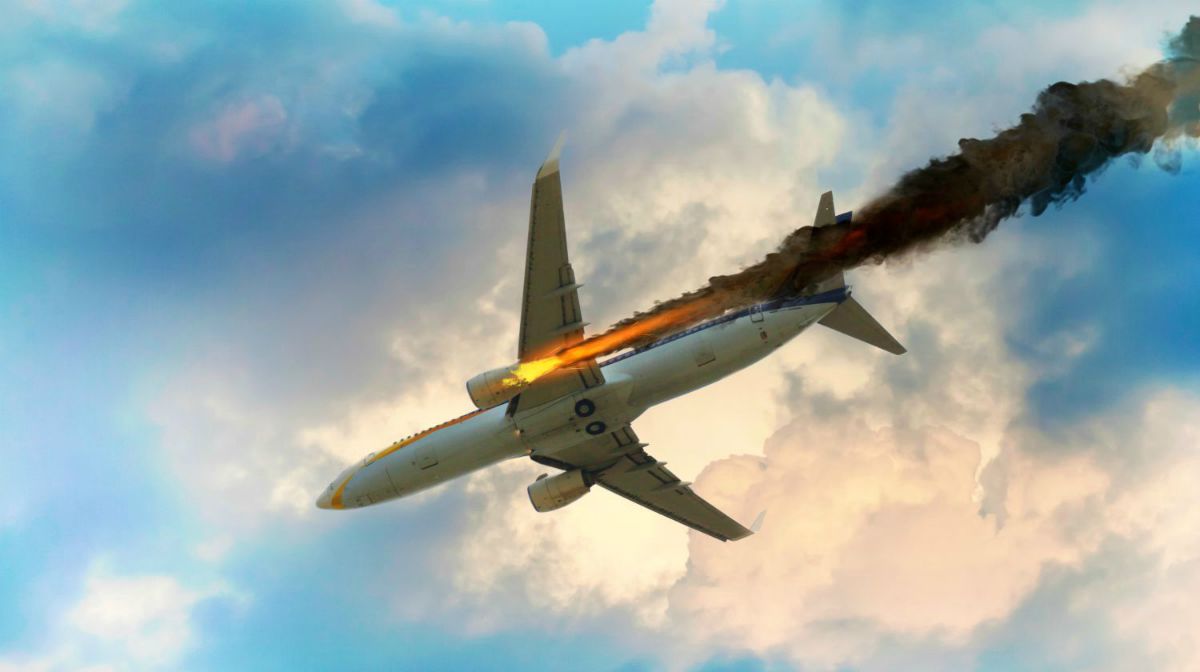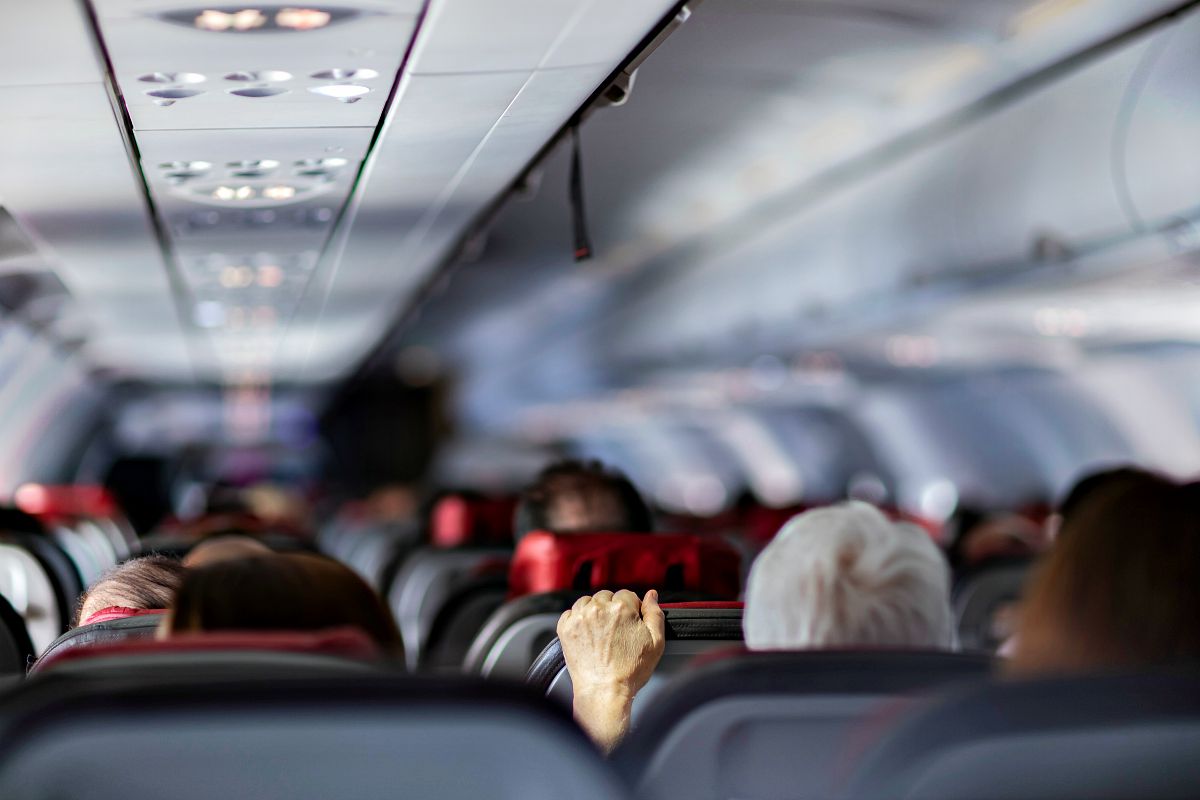Personal Safety
How To Survive A Plane Crash | Safety And Preparedness Tips

Learn how to survive a plane crash by preparing before boarding, staying alert, and heading these safety and preparedness tips!
RELATED: True Survival Stories: The Miracle In The Andes
In this article:
- You Can Survive a Plane Crash
- What Should You Do to Survive a Plane Crash?
- Does Clothing Matter?
- Does Your Seat Selection Have Any Impact on Survival Rates?
- The 5 Row Rule
- How Quickly Do You Need to Get out of the Plane?
- How Important Is Your Seat Belt?
How to Survive a Plane Crash
You Can Survive a Plane Crash

When we imagine ourselves in the worst-case scenario of a plane crash, most of us do not imagine it going very well. For many people, the fear of flying might be better defined as the fear of crashing, at least for me.
In preparing to write this article, I did some research and I was not surprised to find our chances of being in a plane crash are something like a 9 million to 1.
Would it surprise you to know my research showed records indicate there was 568 U.S. plane crashes between 1980 and 2000 and more than 90% of those involved survived? It sure surprised me based on the news reports we see on television.
Thanks to pilots like Chesley (Sully) Sullenberger who successfully executed an emergency water landing of U.S. Airways Flight 1549 in the Hudson River of Manhattan, New York City. This happened after the aircraft had been disabled by striking a flock of Canada geese during its initial climb out of La Guardia Airport on January 15, 2009.
All of the 155 passengers and crew aboard the aircraft survived. [source: wikipedia]
Nonetheless, it’s not something I want to find out for myself. But the question I pose today is, are you prepared if something does go wrong?
What Should You Do to Survive a Plane Crash?
Before every flight, we sit back and try to get comfortable as we greet our fellow passengers sitting next to us. After all, we are going to be sharing the ride with complete strangers who we may need to rely on in an emergency situation, so its a good idea to at least say hello.
As we do the flight attendant goes over the safety rules with us. They talk about the air masks, make sure those near the doors are physically ready to help, talk about the seat belt and how our seat cushion can also be used as a flotation device.
But I wonder how many really pay attention as their life may depend on it? If you’re a frequent flyer you may want to start if you’re not doing so already.
Flight attendants go through hours of safety training and know what needs to be done to help you with any questions you may have. The old adage you need to put your head between your legs and kiss your a** goodbye is not going to help.
So what are the steps you need to take in a real air emergency? Let’s keep in mind we are in a metal tube miles above the ground and most likely traveling at a very high rate of speed.
There are no brakes the pilot can hit to avoid a collision. However, there are some basic things you can do to prepare for the inevitable.
Does Clothing Matter?
Let’s start with clothing pre-flight. What you wear on the plane can save your life.
Yes, that’s what I said, having comfortable clothing with proper footwear can make a difference when it’s time to exit the plane. In the confusion, high heels and open-toed sandals are not going to help.
As a matter of fact, heels are not allowed on the escape slides which help passengers exit the plane. So what should you wear?
www.WikiHow.com tell us that loose clothing also poses a risk, as it can get snagged on obstacles in the close confines of a plane. If you know you’re going to be flying over cold areas, dress appropriately, and consider keeping a jacket on your lap.
You’ll need to be able to stay warm if you survive the crash. Even if that is not a consideration, the more of your body is covered during impact, the less likely you are to receive serious injuries or burns.
Cotton or wool clothing is also preferable as it is less flammable. Wool is preferable to cotton when flying over water, as wool does not lose its insulating properties to the degree cotton does when wet.
RELATED: Survival Skills | The Psychology Of Staying Alive
Does Your Seat Selection Have Any Impact on Survival Rates?

www.Howstuffworks.com shares that Popular Mechanics magazine did some exhaustive research that seems to point to the rear of the plane as the safest spot. They studied data of every U.S. commercial jet crash in the last 36 years and found that passengers in the rear of the plane are 40 percent more likely to survive than those in the first few rows [source: Popular Mechanics].
The Federal Aviation Administration’s position is there’s no safest seat. The FAA also concluded in a 2005 report there’s no evidence anyone carrier is any safer than the next [source: FAA].
The 5 Row Rule
www.Foxnomad.com states Ben Sherman, the author of The Survivors Guide: The Secrets and Science That Could Save Your Life research shows that passengers usually move an average of 5 rows before they can get off a burning aircraft.
Sitting any further away than 5 rows from any exit row greatly reduces your chances of surviving. You can also slightly improve your chances by sitting at the back of the plane.
How Quickly Do You Need to Get out of the Plane?
www.Artofmanliness.com points out studies have shown you have approximately 90 seconds to get out after the plane comes to a stop. Now it means you need to find the exit first, so make sure you know where they are beforehand.
In the commotion and confusion, coupled with possible smoke and debris, looking for the exit at that point could be a game-changer for you.
How Important Is Your Seat Belt?
Do you immediately unbuckle when the seat belt light goes off? According to www.Farecompare.com, there is a very good reason to keep your belt on at all times.
In a car, we know buckling up saves lives. We wear it in case of a collision and never really worry we’d hit a pothole or have a reason to worry about turbulence on the road, correct?
But we are not moving at 300 mph, right? Surviving the initial impact is going to be easier if you have your seat belt on.
Crash survivors have attributed wearing their seat belt as a major reason they survived the initial impact. Another good reason to wear your belt at all times during the flight is turbulence.
This can be a very frighting experience as you may know if you have ever experienced it before. Unforeseen circumstances can cause the plane to pitch, drop or bump without warning.
Severe injury can happen for those not buckled during turbulence. In the event of a plane crash, seconds will matter.
A calm and focused mind can make a huge difference as well both before and after a plane crash. http://www.wikihow.com/ gives us some images of the proper way to prepare yourself for impact from a plane crash as well as some other helpful advice.
View the original article here: How to Survive a Plane Crash | LPC Survival.
Watch this video from Air New Zealand for the most epic safety video ever:
Plane crash survival stories are amazing indeed. Luck may play a huge factor in them, but so does these safety and preparedness tips.
Marvel at these survival stories and try to learn survival tips and preparedness lessons from them because you never know when you might need them yourself.
What do you think of these tips on how to survive a plane crash? Share your thought about this article in the comments section below!
Up Next:
- 10 Amazing True Survival Stories Too Incredible To Be Real
- Travel Survival Kits | What To Prepare For A Long-Haul Flight
- Young Girl Uses Survival Skills, Walks Away From Plane Crash
For awesome survival gear you can’t make at home, check out the Survival Life Store!
Follow us on Facebook, Instagram, Twitter, Pinterest, and Tumblr!
Editor’s Note: This post was originally published on January 3, 2014, and has been updated for quality and relevancy.
-

 Do It Yourself7 months ago
Do It Yourself7 months agoParacord Projects | 36 Cool Paracord Ideas For Your Paracord Survival Projects
-

 Do It Yourself9 months ago
Do It Yourself9 months agoHow To Make Paracord Survival Bracelets | DIY Survival Prepping
-

 Do It Yourself9 months ago
Do It Yourself9 months ago21 Home Remedies For Toothache Pain Relief
-

 Do It Yourself10 months ago
Do It Yourself10 months agoSurvival DIY: How To Melt Aluminum Cans For Casting
-

 Exports8 months ago
Exports8 months agoAre Switchblades Legal? Knife Laws By State



Phil
January 3, 2014 at 12:22 PM
All really great stuff. One the biggest things you forgot though, is that number one is, “besides wearing the proper shoes, NEVER TAKE THEM OFF.” If you have to exit an airplane during an emergency situation and you have your shoes OFF, you WILL NOT HAVE to find them let alone getting them back on. Don’t wear running shoes, crosstrainers, etc, if you happen to step on some jagged metal it will cut clear through those shoes and cut your foot. Women should NEVER wear nylons (pantyhose etc.) If you are required to go down a slide to escape the aircraft, they will melt to your legs.
Just the thoughts of a retired B747 Captain. Remember those in the front end go through training every six months as reguired by the FAA. Training consists of numerous scenarios that could happen in the aircraft. These days I teach in the simulator.
Howie Subnick
January 3, 2014 at 2:58 PM
You talk about servival from 30k feet. Who are we kidding? If it’s a nose dive the generator in the rear of the commercial aircraft will break loose and drive everyone through the nose of the aircraft. If it’s like Sully’s landing, that’s a whole new story. Aircraft in a crash “LANDING” are gowing to fair much better. Best thing is to pray and hope to God “His” license is up to date. Happy New Year To You All.
Ben
January 3, 2014 at 3:09 PM
Good article with some important tips. The only safety tip I had ever received was to put my head between my legs and kiss my backside goodbye.
Tim
January 5, 2014 at 12:44 AM
There is a purpose to the crash brace position. Apparently many injuries result in a crash landing from people’s limbs flailing about. A broken arm isn’t going to help you or your family in getting out of the emergency exit, so bend over and hug your legs. You’re not kissing yourself goodbye, you are preserving the health of your limbs.
–Commerrcial pilot here
Seth
January 7, 2014 at 12:35 PM
Good tips…My wife and I survived a plane crash this past year. Cool heads prevail in situations like this. After the plane “stopped” and the cabin started to fill with smoke, panic naturally wanted to set in but staying clam, focused and task oriented helped save our lives. We were 2 rows away from the exit doors, one had popped open during impact and was jammed and it took an incredibly long time (from our perspective) to get the other one opened so sitting close to the exits isn’t always a sure thing. Cross that off my bucket list…not that it was there before the crash. Thanks for the article.
Ahsun
February 13, 2014 at 10:16 PM
Can any one tell how one can survive 30K feet drop crash landing? or even 5000? These tips are only for minor crash landings in which plane structure is intact. Pray for the probability and stats of not being in the worst disasters.
Pingback: Disaster Survival Skills: Getting Ready for the Worst | Survival Life
Pingback: How To Survive Aircraft Accidents: Flight or Fright? | Survival Life
Pingback: How to Deal With The 5 Stages Of Grief After TSHTF | ray mcnally
Renato G.F. Naso
March 5, 2019 at 11:46 AM
Just don’t board a plane… (Thanks for the helpful article, but I’ve stopped flying since 1979…)
Doug
May 14, 2021 at 6:22 AM
As part of my research in 1979 on psycho-emotional survivor guilt and depression in post-crash syndrome, I interviewed crew and passengers of the Pan Am crash on the Island of Tenerife and the Southern Airways crash in New Hope Georgia – both in early 1977. The advice that still rings in my head today from so many survivors was. After impact, don’t hesitate in shock, look for ANY opening in which you see light (because there isn’t always a door to exit), unfasten your seat belt (some people stayed fastened in their seats and made no effort to exit), leave everything, and move as fast as you can, and in any way possible (through smoke or flames) to get to that opening, and run as a fast as you can. If you realize you are on fire (which some didn’t), stop and roll, don’t run. Wait for medical assistance. A few survivors wished they’d never survived because the psychological trauma and emotional disturbances that followed (from extreme guilt, anxiety, depression, PTSD) made it seemingly unbearable for them. Survivor Guilt, believing that you could’ve done something to save others but you didn’t, so you don’t deserve to live, is a real thing. People who lack healthy, adaptive ego defense mechanisms to ward off the stress that follows, experience the greatest psychological impact. One flight attendant reported trying to save burned bodies with flesh on her hands, spending 11 weeks in a mental hospital (immediately following the crash), moving 11 times in 1 year and marrying 3 times, all in one year following the crash. She ultimately, through therapy, was able to get back to work and enjoy life, but was not easy.